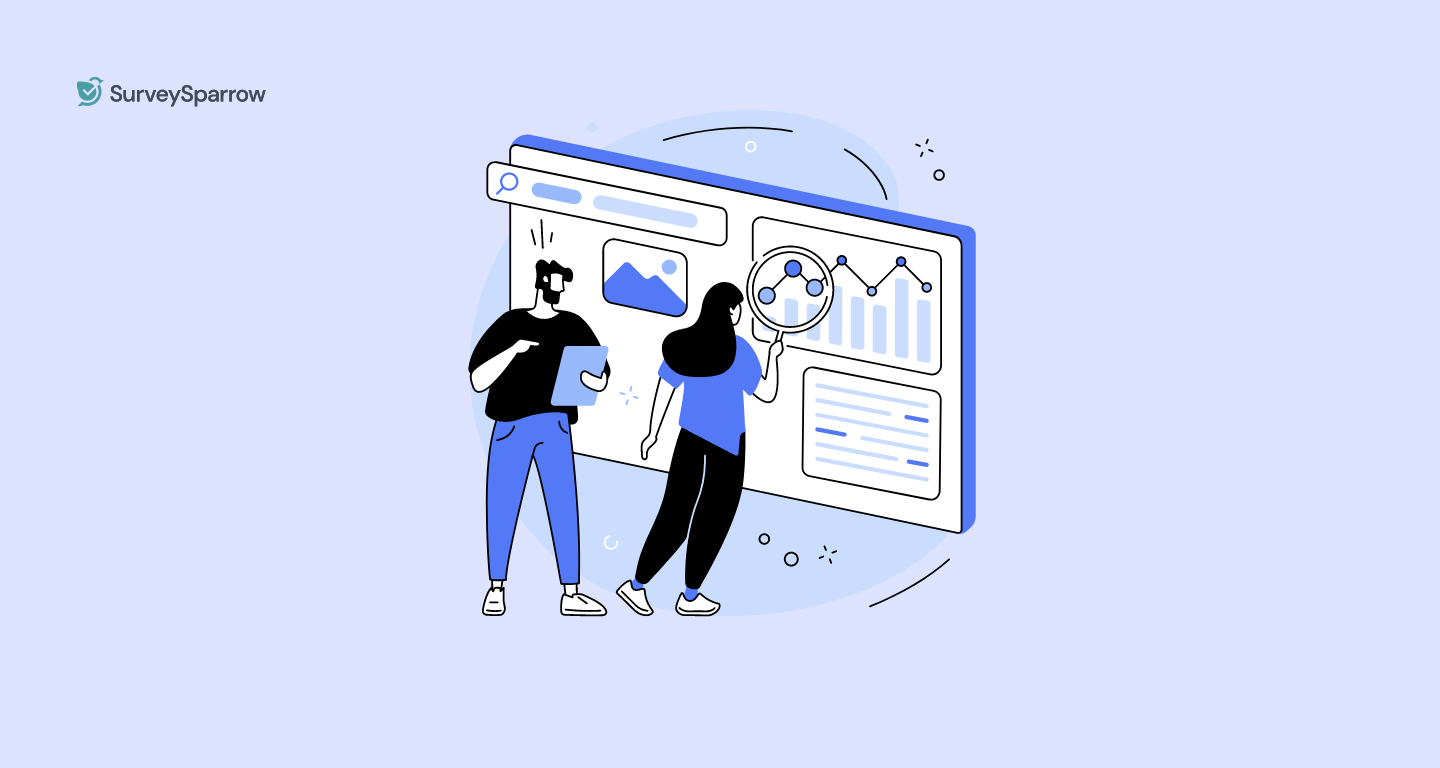Others
Does Your Data Collection App Have It All? Check To Find Out!
Article written by Mathew Maniyamkott
Regular contributor to various magazines. Passionate about entrepreneurship, startups, marketing, and productivity.
8 min read
19 September 2025

Imagine you have to take a survey at an auto expo or a public poll at a political rally. While many online survey tools will help you do the job, they aren’t always designed for working on the go or offline. What’s more, there will be times when you can’t contact someone for a survey on their online devices – due to low tech-savviness, poor WiFi, spam filters, etc. A data collection app can bridge this gap for you.
What is a data collection app?
Data collection apps are mobile applications that let you gather data on a smartphone or tablet. A data collection app collects data with offline forms. Once done, it stores a backup of the information on the survey device and auto-uploads it once you’re back online.
8 must-have features of a data collection app
1. Auto-fill option
Let’s face it, few people have the patience for forms. Also, most users are prone to typos while typing, especially on mobile devices. An auto-fill option can reduce mistakes that crop up in data entry and significantly reduce the time to complete a survey. Overall, it just makes for a better user experience.
2. Offline data collection
Think of a time when offline data collection meant taking thousands of print-outs, collating them, sorting them, and finally having to input all of that data manually. Phew! One of the best things about a data collection app is that you can grab data from anywhere, even in WiFi blackspots, and store that data offline. What’s more, most data collection platforms let you store and sync the data to the cloud when you’re online.
3. Intuitive form builder
Did you know that 74% of US internet users are worried about their online data? Concerns like this lead people to abandon your survey if it is unbranded because they aren’t sure if the form is genuine. What’s more, each business has different survey requirements. So a data collection app should have a form builder that lets you design your survey according to your brand guidelines and business need.
4. Audio capture
One of the benefits of audio recording, obviously, is that it lets you concentrate on the interview flow and prompt more responses if needed. But it is also helpful for capturing subtle physical cues like tone of voice and pitch. So a data collection app is much more efficient when it can capture audio. In addition, if the app can convert the audio into a text format, it can be helpful for further analysis.
5. Geo-tags
Geo-tagging is helpful for large-scale surveys when you have to stick to response quotas for your chosen locations. What’s more, geo-tagging enables marketers and sales teams to identify where their respondents are based and target them accordingly. So the data collection app should document the response location with reasonably accurate geo-tagging that can also integrate with mapping software.
6. Signature capture
Authenticity is the most valuable advantage of signature capture. For example, suppose you are doing an anonymous survey. You need the person’s consent to collect and use their data. Capturing their signature adds credibility to the responses and proves that the data was gathered with their consent. That’s why it’s a must-have feature for a data collection app. The signature capture field should allow the user to sign with a finger on the device.
7. Rich dashboard
No one wants to swim through a sea of numbers! For that reason, a good survey dashboard gives insights at a glance. For example, some of the insights you ought to get are the number of people who completed the survey, the number of page visits, the drop-off rate, and the completion rate. However, you can dive deeper and get details like the respondent’s IP address, start times and finish times. Also, the dashboard should allow the management to view replies in real-time to enable quick action on negative feedback.
8. Skip logic
Your data collection app should let you design surveys based on answer logic. In other words, the survey skips questions irrelevant to the person based on their previous answers. While this may seem like an unnecessary detail, it helps to make the survey experience smoother and save time.
But why should you have a data collection app?
The first and biggest advantage of using a data collection app is that you don’t need an Internet connection. In fact, faulty internet connections are one of the main reasons why people drop out of surveys.
Now let’s check out some more benefits of using mobile data collection apps:
Mitigation of risks
Mobile forms are harder to lose – even when you delete one by mistake! That’s because most data collection apps use cloud-based software to store and update information. This mitigates the risk of data loss.
Fewer data errors
A lot can go wrong while transcribing the data from paper forms to digital documents. With a data collection device, you can eliminate this step and therefore reduce transcription errors.
What’s more, if you want to verify the information, you can easily verify it by checking the app. Data collection apps also have audit features that can help standardization and visual dashboards that spot data gathering issues.
Less time-intensive
Data collection apps are a boon for field research. With instant data transfers and almost zero manual data entry, your team can concentrate on getting insights from the survey.
Data collection apps also help you get more done with integrations with 3rd party tools. For example, you can optimize your team’s workflows, analyze multiple metrics, export the data into reports and act on the insights.
Greater data range
Data collection devices are portable. This makes them easy to carry around and use in different environments – leading to greater flexibility in how you capture data.
Moreover, you can gather more data types than just text, including video, audio, and photos. Especially if you are using the right online survey tool.
Easy to track
You can track responses in real-time on a data room collection app. And unlike paper forms, which need time and effort, report generation and sharing are almost instantaneous on the app.
This data collection platform is also a marketing goldmine because it shows demographic details like the respondents’ IP address, location, device, and other variables.
That said, which are the industries that just can’t do without an offline survey app? We’ll tell you.
Data collection app – 4 industries that can benefit
Hospitality
Did you know that more than a third of hotel guests prefer to use online check-ins now? Things have changed with the pandemic, particularly where hospitality management is concerned. Here are some examples where a data collection app can lead to a better overall experience.
- Authenticate the check-in and check-out process with signature capture.
- Use data collection devices in each room with form QR codes to order room service.
- Leave voice feedback with audio capture.
- Use geo-tagging to improve the stay experience through relevant recommendations, add-on services, and offers.
- Allow guests to express their unique needs and the staff to respond accordingly.
- Collect visitor feedback and save hundreds of man-hours
- Reduce the need for guests to touch paper forms that may not have been sanitized.
- Stay connected with guests by sending them birthday/anniversary wishes, status updates, courtesy emails, and more.
Education
Whether the classroom you choose is remote, online, blended or real-world only, teachers today are closely scrutinized for their performance in every class. So how can a data collection app help here?
- Collect student feedback in brick-and-mortar classrooms.
- Understand the psyche and background of students and their parents, and use it to fine-tune the learning.
- Evaluate the facilities offered and get suggestions for improvement
- Evaluate each teacher’s strengths, weaknesses, blind spots and areas for improvement.
- Gauge the academic performance of each class and grade as a whole.
- Measure the effectiveness of current study tools, materials and courses.
- Assess current working conditions and the hurdles to teaching.
Travel and Tourism
Regardless of budget, everyone wants to feel like a first-class traveler. So here are the avenues where a field data collection app can help you provide an enjoyable experience.
- Collect feedback from tour guests on arrival and departure.
- Set up mobile, kiosk or tablet surveys to capture moment-of-experience feedback at venues.
- Use multi-language surveys to communicate comfortably with people of various nationalities.
- Gather on-the-ground tourist feedback about the location
- Analyze traveler feedback for different areas.
- Gauge the customer experience at travel agencies and booking services.
- Evaluate the tour packages
- Enable sign-up for loyalty programs and push promotional offers
Healthcare
A lot of data collection in healthcare still happens through old-fashioned paperwork. While these may seem like a minor inconvenience, it stresses out patients in an already stressful situation. However, medical surveys, done via a data collection app, can make the experience convenient and transparent. So what else can you do?
- Take patient feedback at intervals throughout the treatment.
- Get on-premise feedback about the quality of the care, facilities and treatments.
- Take immediate action in case of negative feedback.
- Digitize routine processes like patient registration, screening, history, consent, medical clearance and discharge forms.
- Reduce queues at the pharmacy with online order forms.
- Schedule reminders about the next appointment using appointment booking software.
- Maintain immunization records.
- Allow patients to track their health and symptoms with progress reports.
- Identify patients who are candidates for targeted or experimental therapies.
- Monitor the overall performance of all units in a healthcare franchise.
Conclusion
In this article, we talked about data collection apps and their must-have features. We also discussed the benefits of a data collection app and the kind of industries that would benefit from them the most. So, what tool are you currently using for your data collection?

Thousands of brands trust SurveySparrow to turn feedback into growth. Try it free today!
Mathew Maniyamkott
Guest Blogger at SurveySparrow
Related Articles

Others
Crunchy Leaves and Frosty Winds... Hello, Mr. November!
3 MINUTES
9 November 2018

Others
30+ Business Plan Questions & Step-By-Step Business Plan Guide
9 MINUTES
16 June 2023

Others
12 Best Live Chat Software to Look For in 2024
12 MINUTES
2 March 2020

Others
Top 9 Customer Analytics Tools and Platforms
15 MINUTES
11 May 2024
